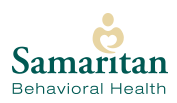Trauma-Focused Cognitive-Behavioral Therapy for Se...
by Judith A. Cohen, M.D., Esther Deblinger, Ph.D., and Anthony Mannarino, Ph.D. Psychiatric Times September 2004 Vol. XXI Issue 10 © Psychiatric Times. All rights reserved. Evidence is growing that trauma-focused...
by Judith A. Cohen, M.D., Esther Deblinger, Ph.D., and Anthony Mannarino, Ph.D.
Psychiatric Times September 2004 Vol. XXI Issue 10
© Psychiatric Times. All rights reserved.
Evidence is growing that trauma-focused cognitive-behavioral therapy (TF-CBT) is an effective treatment for sexually abused children, including those who have experienced multiple other traumatic events. This article reviews the research that has examined treatments for sexually abused children and suggests future research priorities in this regard.
Most of the studies that have evaluated TF-CBT have been well designed. This treatment model represents a synthesis of trauma-sensitive interventions and well-established CBT principles (Cohen et al., 2001; Deblinger and Heflin, 1996). Trauma-focused cognitive-behavioral therapy was jointly developed by two groups of researchers who have recently worked together to conduct multisite, treatment-outcome studies for sexually abused and otherwise traumatized children. The therapy was developed to resolve posttraumatic stress disorder, and depressive and anxiety symptoms, as well as to address underlying distortions about self-blame, safety, the trustworthiness of others, and the world. The treatment also fits sexual abuse and other traumatic experiences into a broader context of children’s lives so that their primary identity is not that of a victim.
Core components of TF-CBT are psychoeducation about child sexual abuse and PTSD; affective modulation skills; individualized stress-management skills; an introduction to the cognitive triad (relationships between thoughts, feeling and behaviors); creating a trauma narrative (a gradual exposure intervention wherein children describe increasingly distressing details of their sexual abuse); cognitive processing; safety skills and education about healthy sexuality; and a parental treatment component. Parents are seen separately from their children for most of the treatment and receive interventions that parallel those provided to the child, along with parenting skills. Several joint parent-child sessions are also included to enhance family communication about sexual abuse and other issues. Most of the TF-CBT treatment studies have consisted of 12 treatment sessions.
Cohen and Mannarino conducted two parallel, randomized, controlled trials for 67 sexually abused preschoolers (3 to 6 years old) and 82 children and young adolescents (7 to 14 years old), comparing TF-CBT to nondirective supportive therapy (NST) (Cohen and Mannarino, 2000, 1998a, 1998b, 1997, 1996a, 1996b; Cohen et al., in press). The nondirective supportive therapy consisted of play for younger children and child- or parent-directed supportive therapy for older children. The preschool study demonstrated the superiority of TF-CBT in improving PTSD symptoms (including sexualized behaviors) and externalizing and internalizing behaviors. These differences were maintained over a one-year follow-up (Cohen and Mannarino, 1997, 1996a).
The strongest mediator of treatment response other than type of treatment was parental emotional distress. At one-year follow-up, the strongest predictor of positive response was parental support of the child (Cohen and Mannarino, 1998a, 1996b). Among treatment completers in the young adolescent study, TF-CBT was superior to NST in improving depression and social competence at the end of treatment, and in improving PTSD and dissociation at one-year follow-up. (Cohen and Mannarino, 1998b; Cohen et al., in press). The strongest mediators of treatment response were parental support of the child and the child’s sexual abuse-related attributions (Cohen and Mannarino, 2000).
Deblinger et al. (1996) randomly assigned 100 sexually abused children to standard community care or TF-CBT provided to the child only, the parent only or both. This study documented that TF-CBT provided directly to the child (in either the child-only or parent plus child condition) was superior in improving PTSD symptoms, while TF-CBT provided directly to the parent (in either the parent-only or the parent plus child condition) was superior in improving the child’s depressive and behavior problems, as well as in improving positive parenting practices. This was the first study to directly demonstrate the benefit of including a parental treatment component for sexually abused children. These differences were maintained during a two-year follow-up (Deblinger et al., 1999).
Deblinger and colleagues (2001) conducted a group randomized, controlled trial for preschool children, comparing TF-CBT to supportive therapy. Each treatment was provided in parallel child and parent groups. Because of the group setting and the young age of these children, gradual exposure was not included. This study demonstrated that TF-CBT was superior to supportive therapy in improving children’s body safety skills and parental distress related to their children’s sexual abuse.
The Cohen/Mannarino and the Deblinger et al. groups collaborated to conduct a multisite randomized, controlled trial for 229 sexually abused children (Cohen et al., 2004). Over 90% of these children had experienced multiple traumas, with a mean of 3.6 different types of traumatic events. Seventy percent had experienced the sudden unexpected death or terminal illness of a loved one; 58% had witnessed domestic violence; 26% were victims of physical abuse; 37% had witnessed or been involved in a serious accident; 17% were victims or witnesses of community violence; 14% had experienced a fire or natural disaster; and 25% had experienced other PTSD-level traumas such as school violence, medical traumas, terrorism or kidnapping.
Most of these children (59%) were living in single-parent families, and 24% of the participating parents had reported drug or alcohol problems. More than half of the participants (52%) were from low-income families. We believe that the children in this study were similar to sexually abused children typically seen in community settings.
This study demonstrated that TF-CBT was superior to child-centered supportive therapy (which included limited interpretations and prompts to discuss sexual abuse-related topics) in improving children’s PTSD, depression, behavior problems, and shame and abuse-related attributions such as interpersonal trust. Parents receiving TF-CBT showed greater improvement in depression, emotional distress about their children’s abuse, support of the child and effective parenting practices.
King et al. (2000) compared a wait-list control condition to child-only TF-CBT or child plus parent individual TF-CBT for 36 sexually abused children in Australia. They demonstrated that the TF-CBT groups improved significantly with regard to PTSD. It is important to note that therapists conducted the interviews that assessed PTSD symptoms, so these ratings were not blind to the treatment condition. Children in the child-only TF-CBT condition experienced the greatest improvement in anxiety and depressive symptoms after treatment, with the child plus parent group also experiencing significantly greater improvement in anxiety than the wait-list control group. At three-month follow-up, the child plus parent TF-CBT group had lower levels of fear than did the other two groups.
Randomized, controlled trials for sexually abused children that use models other than TF-CBT are rare. One study randomly assigned 71 sexually abused 6 to 14 year olds to 30 sessions of individual psychoanalytic therapy or 18 sessions of group psychoeducation (Trowell et al., 2002). Children receiving the individual psychoanalytic treatment experienced greater improvement in PTSD symptoms than did the group psychoeducation cohort, but the design of the study made it difficult to know whether this difference was due to treatment type, format or length.
Another study randomized 22 sexually abused children to psychodynamic therapy or behavioral reinforcement therapy and found that the reinforcement therapy was superior in improving sleep, enuresis, sexualized behaviors and general behavior problems (Downing et al., 1988). These studies suggest that well-designed randomized, controlled trials of psychoanalytic and behavioral therapies for sexually abused children should be conducted in the future.
In summary, the weight of current evidence supports the superiority of TF-CBT over treatments such as nondirective play therapy and supportive therapies, which are frequently provided to sexually abused children in community settings. We are currently conducting two studies funded by the National Institute of Mental Health to identify the critical components of TF-CBT, the optimal number of TF-CBT treatment sessions for children of different developmental levels, and whether adding sertraline (Zoloft) to TF-CBT improves outcomes in sexually abused children and adolescents. As part of the Substance Abuse and Mental Health Services Administration-funded National Child Traumatic Stress Network (NCTSN), we are also trying to identify optimal methods to successfully disseminate the use of TF-CBT in community settings across the United States. In the future, it will be critical to conduct research to evaluate the efficacy of TF-CBT and other treatments (including psychopharmacological interventions) for sexually abused children with multiple psychiatric or substance abuse comorbidities, and to further test whether TF-CBT and other treatments are effective for children with PTSD related to traumatic events other than sexual abuse.
Dr. Cohen is co-director of the Center for Traumatic Stress in Children and Adolescents at Allegheny General Hospital in Pittsburgh. She is also professor of psychiatry at Drexel University College of Medicine.
Dr. Deblinger is clinical director of the Center for Child Support at the University of Medicine & Dentistry of New Jersey.
Dr. Mannarino is co-director of the Center for Traumatic Stress in Children and Adolescents at Allegheny General Hospital in Pittsburgh. He is also chairperson of the department of psychiatry at Allegheny General Hospital.
References
Cohen JA, Deblinger E, Mannarino AP, Steer R (2004), A multi-site randomized controlled trial for multiply traumatized children with sexual abuse-related PTSD. J Am Acad Child Adolesc Psychiatry 43(4):393-402.
Cohen J, Mannarino AP (1996a), A treatment outcome study for sexually abused preschool children: initial findings. J Am Acad Child Adolesc Psychiatry 35(1):42-50.
Cohen JA, Mannarino AP (1996b), Factors that mediate treatment outcome of sexually abused preschool children. J Am Acad Child Adolesc Psychiatry 35(10):1402-1410.
Cohen JA, Mannarino AP (1997), A treatment study for sexually abused preschool children: outcome during a one-year follow-up. J Am Acad Child Adolesc Psychiatry 36(9):1228-1235.
Cohen JA, Mannarino AP (1998a), Factors that mediate treatment outcome of sexually abused preschool children: six- and 12-month follow-up. J Am Acad Child Adolesc Psychiatry 37(1):44-51.
Cohen JA, Mannarino AP (1998b), Interventions for sexually abused children: initial treatment findings. Child Maltreat 3(1):17-26.
Cohen JA, Mannarino AP (2000), Predictors of treatment outcome in sexually abused children. Child Abuse Negl 24(7):983-994.
Cohen JA, Mannarino AP, Deblinger E (2001), Child and Parent Trauma-Focused Cognitive Behavioral Therapy Treatment Manual. Philadelphia: Drexel University College of Medicine (available from authors).
Cohen JA, Mannarino AP, Knudsen K (in press b), Treating sexually abused children: One year follow-up of a randomized controlled trial. Child Abuse Negl.
Deblinger E, Heflin AH (1996), Treating Sexually Abused Children and Their Nonoffending Parents: A Cognitive Behavioral Approach. Thousand Oaks, Calif.: Sage Publications.
Deblinger E, Lippmann J, Steer R (1996), Sexually abused children suffering posttraumatic stress symptoms: initial treatment outcome findings. Child Maltreat 1:310-321.
Deblinger E, Stauffer LB, Steer RA (2001), Comparative efficacies of supportive and cognitive behavioral group therapies for young children who have been sexually abused and their nonoffending mothers. Child Maltreat 6(4):332-343.
Deblinger E, Steer R, Lippman J (1999), Two-year follow-up study of cognitive behavioral therapy for sexually abused children suffering post-traumatic stress symptoms. Child Abuse Negl 23(12):1371-1378.
Downing J, Jenkins SJ, Fisher GL (1988), A comparison of psychodynamic and reinforcement treatment with sexually abused children. Elementary School Guidance and Counseling 22:291-298.
King NJ, Tonge BJ, Mullen P et al. (2000), Treating sexually abused children with posttraumatic stress symptoms: a randomized clinical trial. J Am Acad Child Adolesc Psychiatry 39(11):1347-1355 [see comment].
Trowell J, Kolvin I, Weeramanthri T et al. (2002), Psychotherapy for sexually abused girls: psychopathological outcome findings and patterns of change. [Published erratum Br J Psychiatry 180:553.] Br J Psychiatry 180:234-247.


